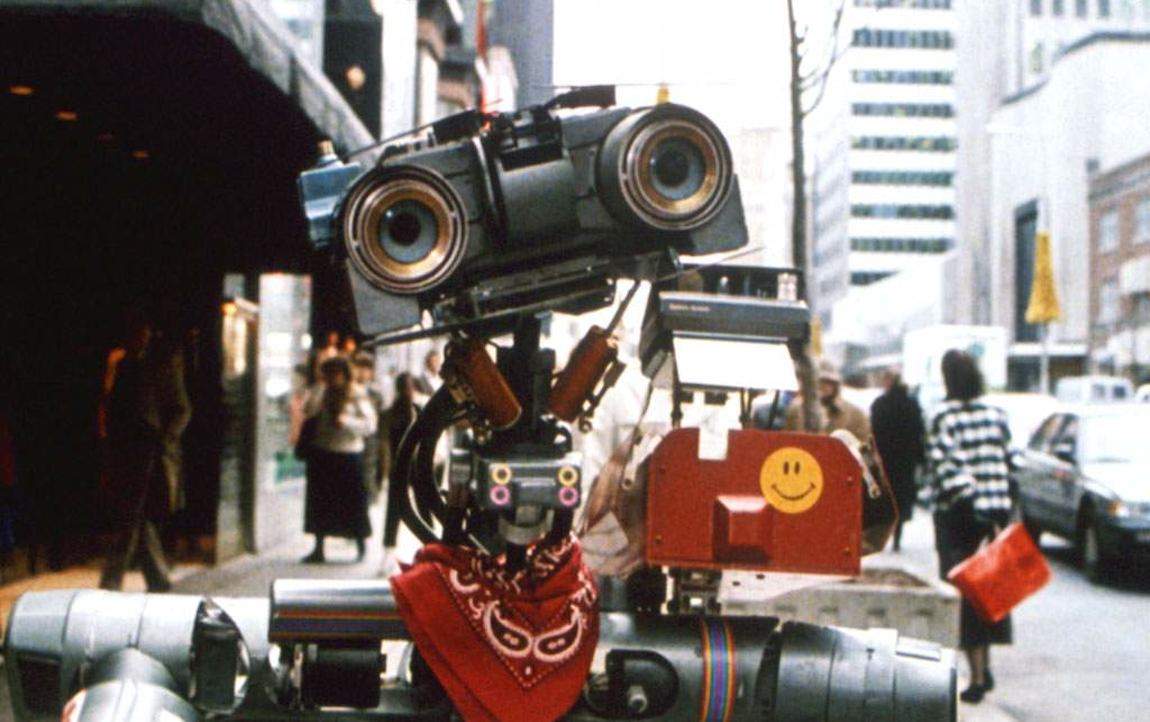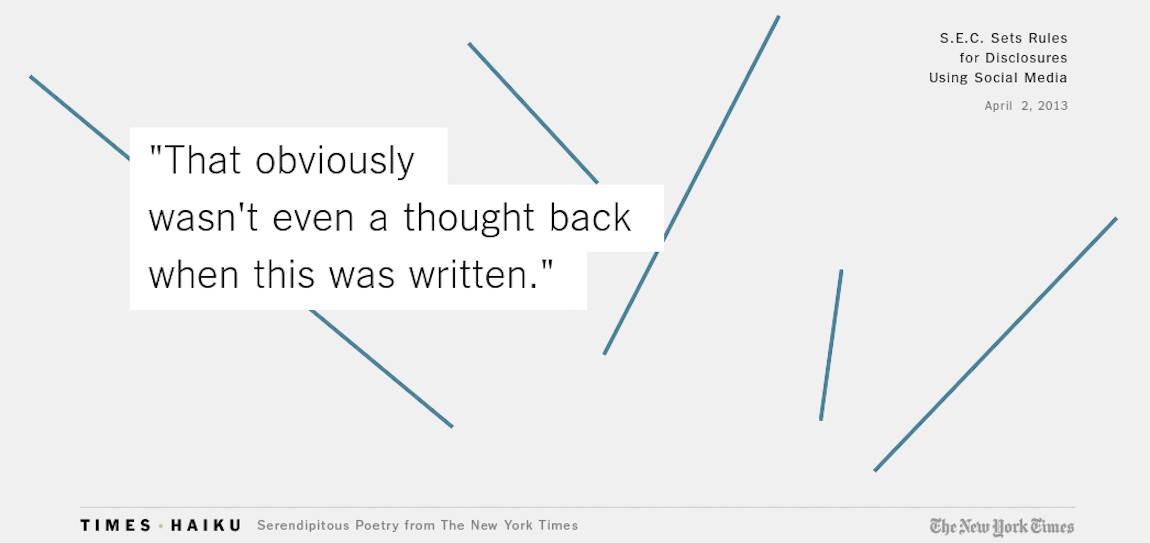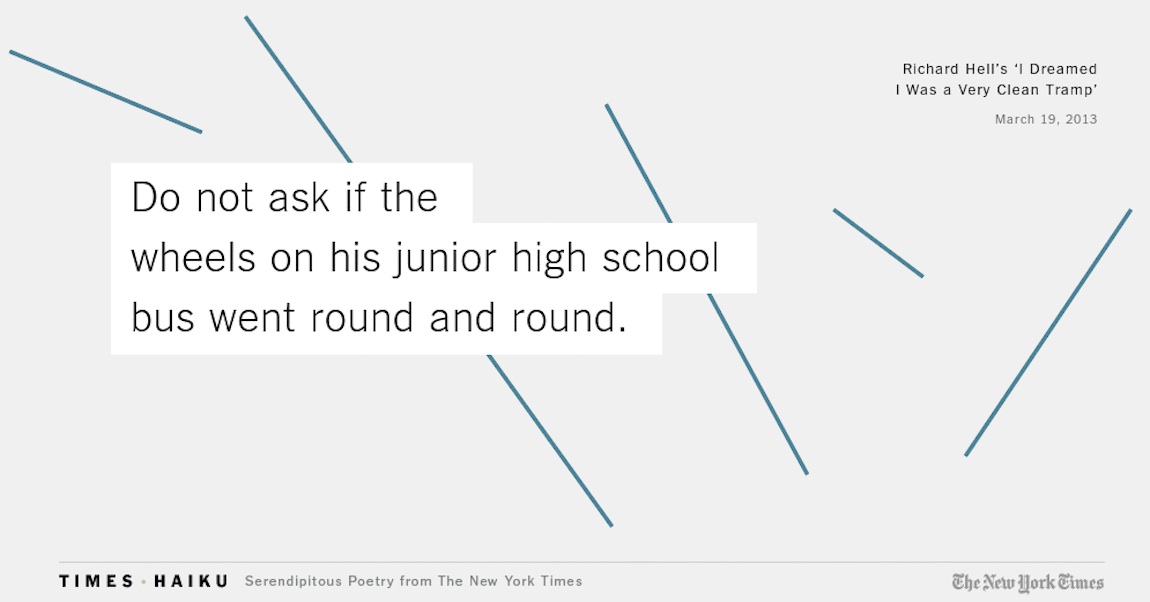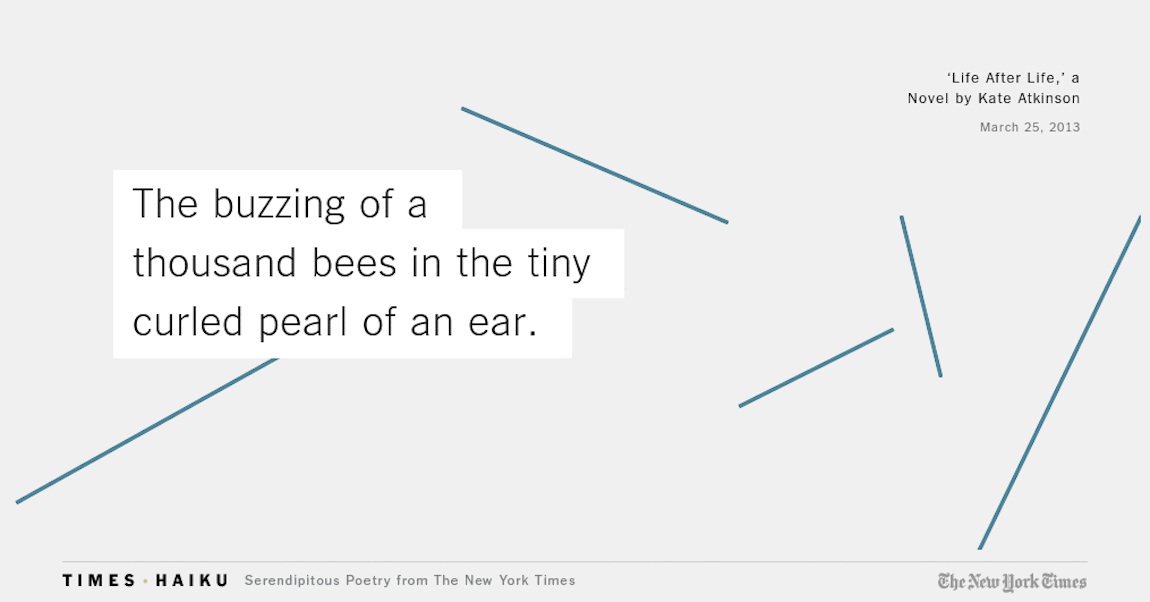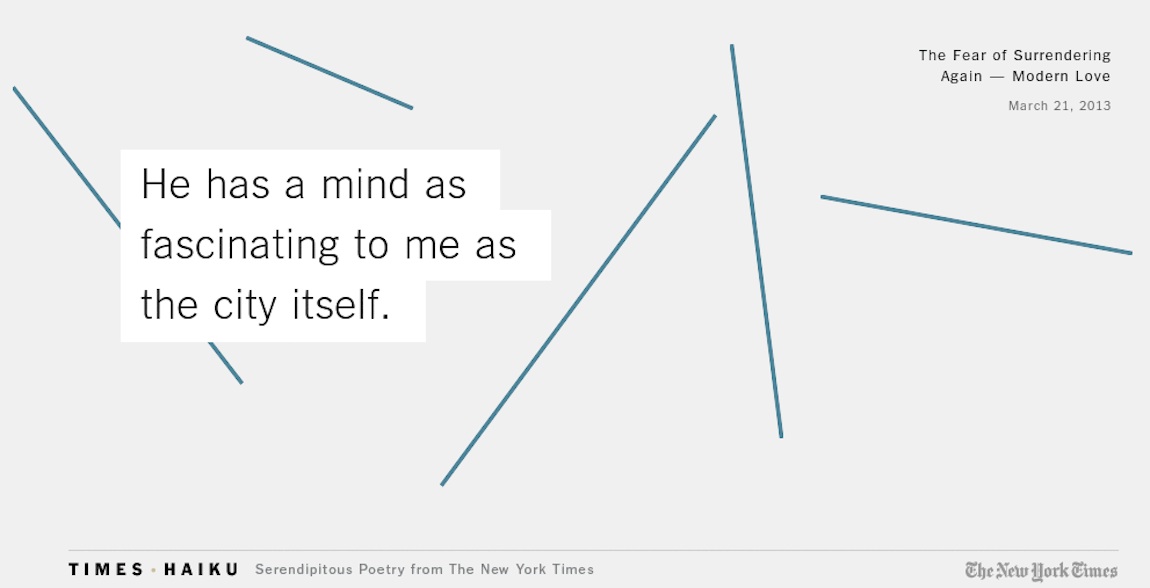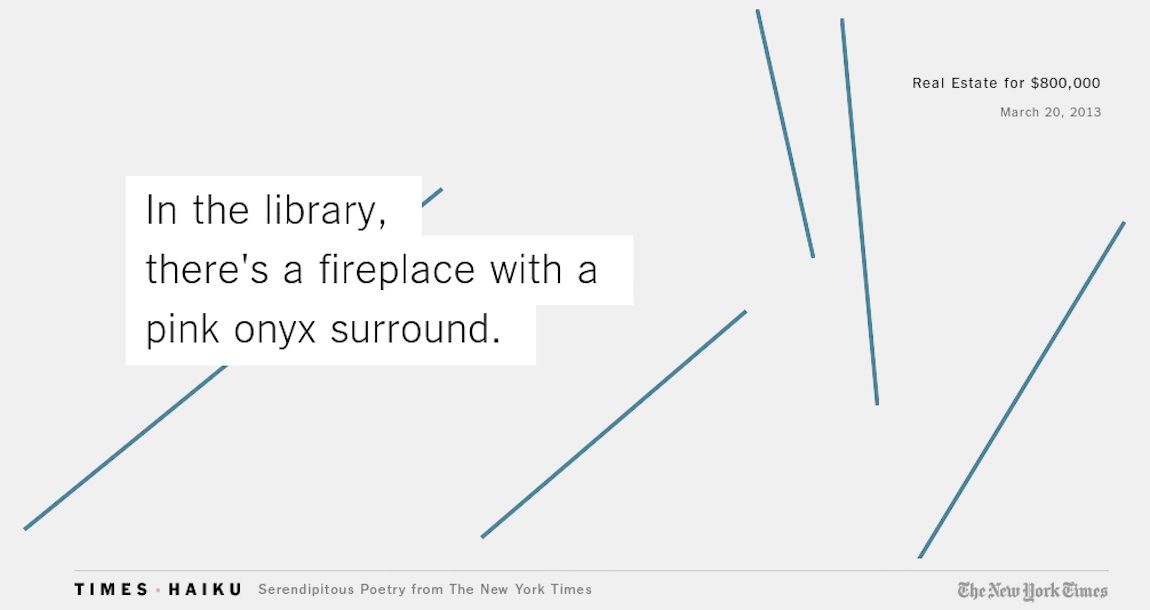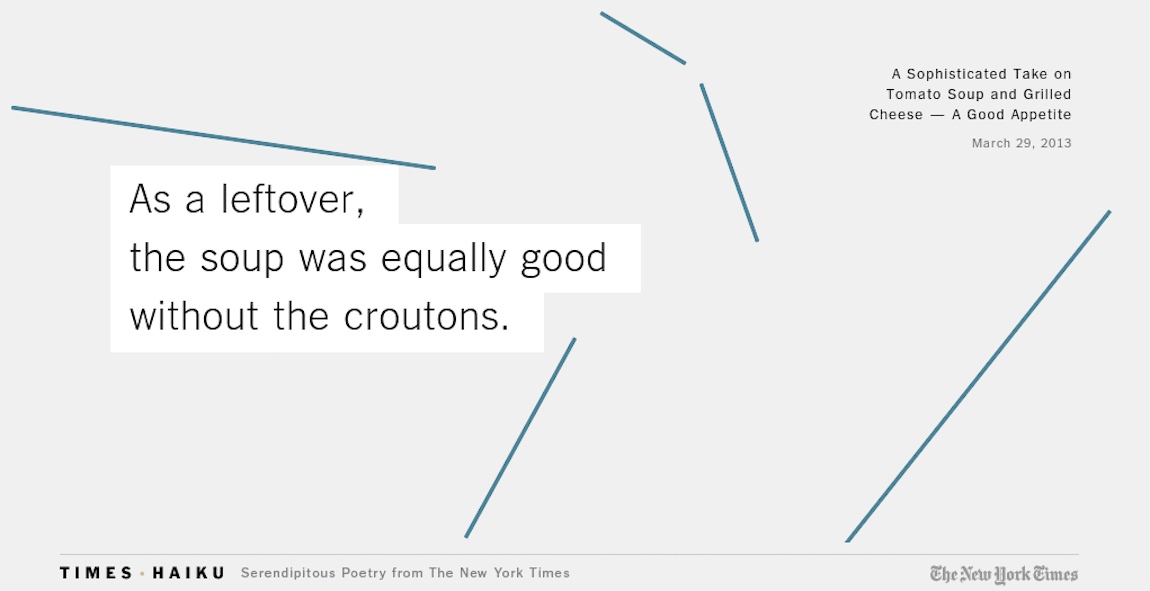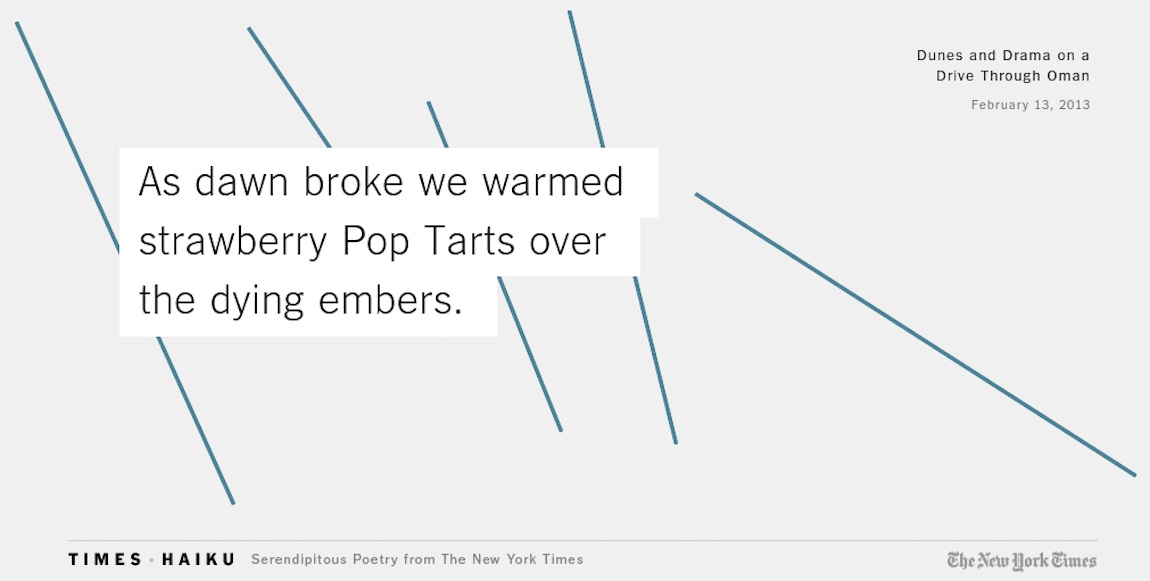New York Times Creates Haiku Robot to Share News
Twitter too much? Try these New York Times haikus, created by algorithm.
Have you ever found getting through more than 17 syllables of news takes far too much effort? Well luckily for you the New York Times has designed an algorithm that deconstructs news stories into everybody's favourite Japanese poem style, the haiku.
For those unaware, a haiku is a short style of poetry with a specific syllabic structure of five syllables in the opening line, seven in the following and five in the concluding. Although there are other elements to haikus, this is the format the algorithm operates on as other aspects of this poetic style are "a lot harder to teach an algorithm", according to Jacob Harris, the senior software designer for the NYT and the author of the advanced algorithm.
The haikus are constructed when the algorithm periodically scans articles published on the newspaper's home page. It then breaks down these articles sentence by sentence, looking for potential haikus via an online dictionary that counts syllables and even encompasses a word like 'Rihanna' to process the language employed by the New York Times.
Reversing the typical trend of technology, the computer needs humans to operate successfully as it cannot distinguish between a harmonious haiku and a horrid one by itself.
Once a journalist has selected a poetic pearl, many of which encapsulate the article's essence, it is then transformed into an aesthetically pleasing image in order for the poems to "retain their visual integrity" as they are shared online. The coloured lines may seem illogical but they are actually delicately designed to match the metre of the first line of the poem. Our favourites are below but check the NYT haiku blog as it is updated daily.
Via PSFK.
